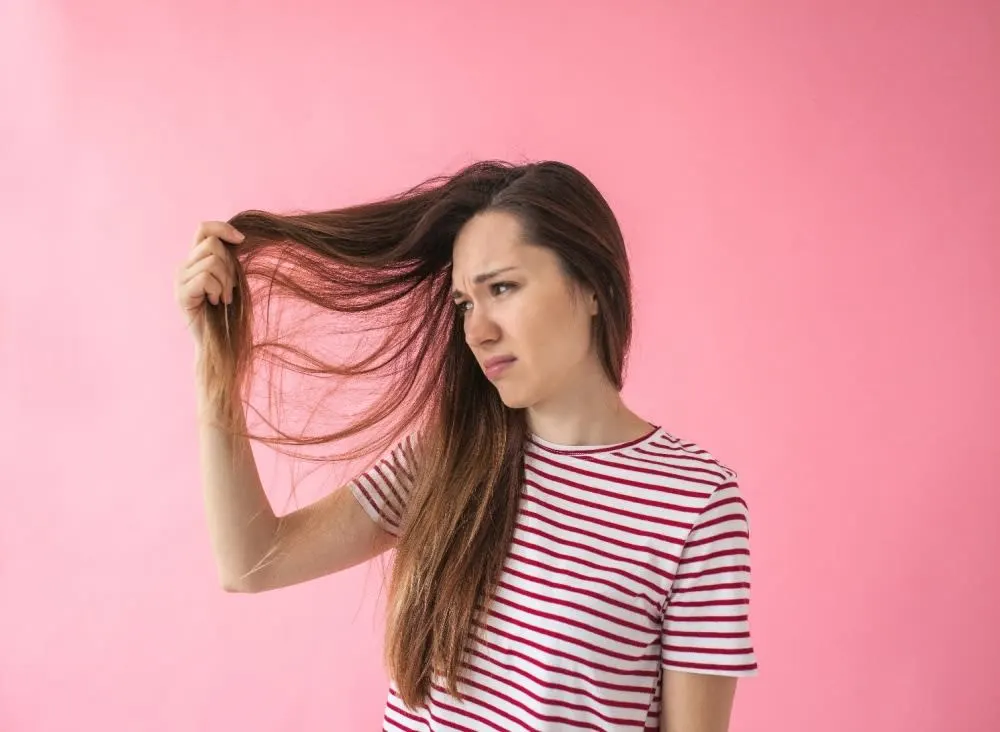Here’s How To Find The Right Clarifying Shampoo To Keep Oily Scalp At Bay
Sometimes it can feel like your hair just needs to be reset, to just remove all the junk in there. This is where a clarifying shampoo can play a part.
Clarifying shampoos are shampoos with extra strength that are meant for deep cleaning of your hair and scalp. They have tremendous capacity to remove excess dirt, leftover products, oil, sweat and even flakes. It can literally feel like you’re resetting your hair back to normal. But you must tread carefully.

They are almost like any other shampoo for oily scalp that you might find, in that they’re made up mainly of water. But additionally, they incorporate heavy surfactants like ammonium-sodium lauryl sulphate.
Surfactants work as emulsifiers which can lift all the dirt, grease and residue from your hair and scalp. This gets washed away when you rinse your hair, leaving nothing behind. Heavier it is, stronger the job that is done. Clarifying shampoos are perfect for excessively oily scalp and dull hair, bringing back a lightness to the strands.
But as these shampoos contain no moisturising properties, they can dry out your scalp and hair, leaving it vulnerable to damage.
If you feel that your hair has become too oily and dull, and that normal shampoo use is not doing the trick, you might want to use clarifying shampoos occasionally. It can remove this oiliness and restore a natural bounce back to your hair. But if used on dry hair, it can severely damage your scalp and even lead to hair loss. So, people with dry and frizzy hair, should avoid using a clarifying shampoo.
Swimmers often use these hair cleansing shampoos, as they can get rid of that green tinge which gets imprinted on your hair due to chlorine. If you use too much hair product, you might consider using clarifying shampoos occasionally to get rid of any leftover product, that isn’t caught by your regular hair care. It is often used by salons to clean your hair before any extensive treatment, and that is where you might have overheard the question of ‘what is clarifying shampoo’.
A point to note is that clarifying shampoos generally do not work well with coloured hair. You should be extremely careful in the product you choose, as these shampoos can damage your hair and your colour. Coloured hair is generally on the dry side and clarifying shampoos can worsen this condition.
Dandruff is caused by excessive oil build-up on your scalp, which is fodder for the fungus Malassezia Globosa that leads to those ghastly flakes. So, a scalp cleansing shampoo that removes excessive oil from your scalp, would help with dandruff. And if used sparingly, it can complement your regular anti-dandruff shampoos. A healthy combination of both can prevent hair dandruff from coming back and boosts the health of your scalp.
But it is a tricky one, as even though it removes the oil build-up, it can sometimes dry out your scalp excessively. This triggers your body to produce even more oil than before and could aggravate your dandruff condition, instead of solving it.
It is important to approach clarifying shampoos carefully, if you have any underlying conditions like dandruff, dermatitis, or eczema. If it is severe, consult a doctor before using these shampoos.
It’s a shampoo. So, you take a small amount and lather it into your hair. Start from your roots, as this is where you will generally find all the grime. Work your way down and rinse it out completely. An important step is to use a little conditioner after. As these hair cleansing shampoos do not moisturise your hair, it is important to add a conditioner to your process. It softens the hair and prevent it from drying out. Always use small amounts and wash them off completely.
Choosing a clarifying shampoo is based entirely on your hair type and texture. It is important to understand what chemicals are present in the shampoos available and to see whether these can affect you. In general, if your hair is excessively oily or you swim regularly, you can use a clarifying shampoo once a week or once in two weeks. But if your hair is on the dryer side, use it once in two months.
A clarifying shampoo should never replace your regular shampoos. It has the potential of completely stripping away the natural oils on your hair and scalp, which are meant to form a protective layer. This can leave your scalp helpless against any harm, while making your hair dry and frizzy.
You should use it only when you need to clear excessive oil or hair product build-up. If these products are causing an itchy scalp, combining it with shampoos like Cool Menthol can reduce the problem. If there is dandruff, combine it with anti-dandruff shampoos like the Lemon Fresh shampoo. Conditioners like the Supreme Scalp Soothing incorporate Argan oil and Aloe Vera to reduce an itchy scalp. Using this after a clarifying shampoo can retune the balance of your scalp, bringing life back to your dull and gloomy hair.



